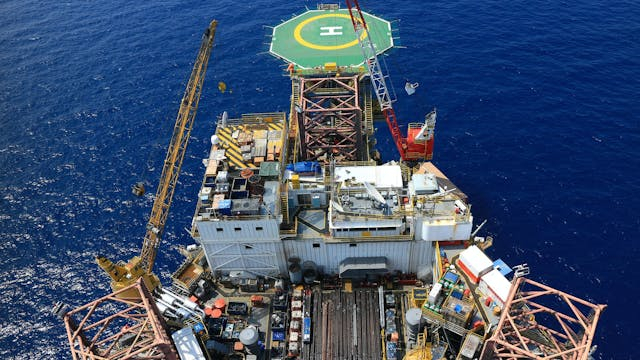Energy paradox: The rise of oil rigs in the era of renewables

In recent years, there has been an ongoing and often heated debate about the need for a global transition to renewable energy sources to combat climate change and reduce carbon emissions. Governments and environmental advocates worldwide are pushing for more sustainable practices and investments in green technologies. Yet, despite these pressures and the growing momentum behind renewable energy, the oil and gas industry continues to defy expectations. Oil and gas rigs remain crucial to the global economy, operating at or near full capacity to meet the persistent demand for fossil fuels. This paradox highlights the complex dynamics between the drive for cleaner energy and the enduring reliance on traditional energy sources. Behind the seemingly straightforward statistics of rising rig counts lies a nuanced narrative, revealing that the path to a greener future is fraught with challenges and competing interests.
Oil rigs continue to grow
According to data from the American oilfield services company Baker Hughes, the number of oil and gas rigs worldwide continues to grow, despite ongoing talks about a green future. In July of this year, the number of active rigs reached 1,713, which is six more than in June. However, compared to July 2023, this number is 106 rigs fewer, News.az reports citing Neftegazru. What is happening? It may be that companies are seeking a balance between the need to increase production and the pressure exerted by environmental movements and regulatory bodies.
Regional differences: Who is winning the oil race?
In the United States, the number of rigs has decreased to 586. This may be related to changes in the country's energy policy, which aims to reduce carbon emissions and invest in renewable energy sources. However, Canada seems to have seized the opportunity and increased its rig count to 193. Canadian companies may be striving to secure their position in the global oil market, despite the risks associated with the long-term sustainability of fossil fuels.
The Middle East is also showing growth, with the number of rigs increasing by three to reach 345. This region, with the largest oil reserves, remains focused on maintaining and even increasing production volumes, possibly in anticipation of rising demand in Asia.
Africa and Europe: Between growth and decline
Africa, with its significant but not fully developed oil resources, has seen an increase in the number of rigs to 108. This may indicate a desire by countries on the continent to improve their economic performance through oil exports. However, a lack of infrastructure and political instability remain significant challenges.
Europe, on the other hand, has shown a slight decline to 118 rigs. This can be explained by European countries' strong commitment to transitioning to a green economy and reducing reliance on fossil fuels. At the same time, Europe continues to import a significant amount of oil to meet current needs, demonstrating the complex dilemma facing European policymakers.
Latin America and the Asia-Pacific region: Sudden surges
Latin America increased its rig count by seven to 154. This may be driven by countries in the region seeking to maximize their natural resources, despite geopolitical risks and oil price fluctuations. Amid economic instability, oil revenues become an important source of government funding.
In the Asia-Pacific region, growth was more significant, with an increase of 21 rigs to 209. This region is actively developing, and many countries, such as China and India, are experiencing rising energy demand, pushing them to increase fossil fuel production despite parallel efforts to adopt renewable energy sources.
Historical data and forecasts
Historical data shows that the average monthly number of operating rigs in 2023 reached 1,814, compared to 1,747 in 2022. This is, of course, far from the historical high of 5,624 rigs recorded in 1981, but it still indicates a steady recovery from the pandemic low of 2020, when only 1,352 rigs were active.
Future questions: Where are we headed?
Amid the growing number of rigs, the question arises: how sustainable is this approach? At first glance, it seems that oil companies are ignoring the global trend toward reducing emissions and continue to rely on fossil fuels. However, in reality, many of them are also investing in research and development in the field of renewable energy, trying to anticipate the future.
One can only speculate how long the world will balance between the old and the new. One thing is clear: despite talks of a green transition, oil and gas continue to play an important role in the global economy. Nonetheless, the need for energy-efficient and sustainable solutions will only grow, and the question is whether companies can adapt in time to remain relevant in the new energy landscape.
The Rocket and Artillery formations of the Azerbaijan Army conduct live-fire exercises in accordance with the combat training plan for 2021, the Ministry of Defense of Azerbaijan told Baku Tribune.
LAST NEWS






.jpg&h=67&w=67&zc=1&q=100)













